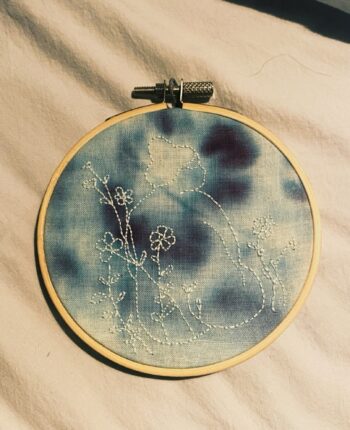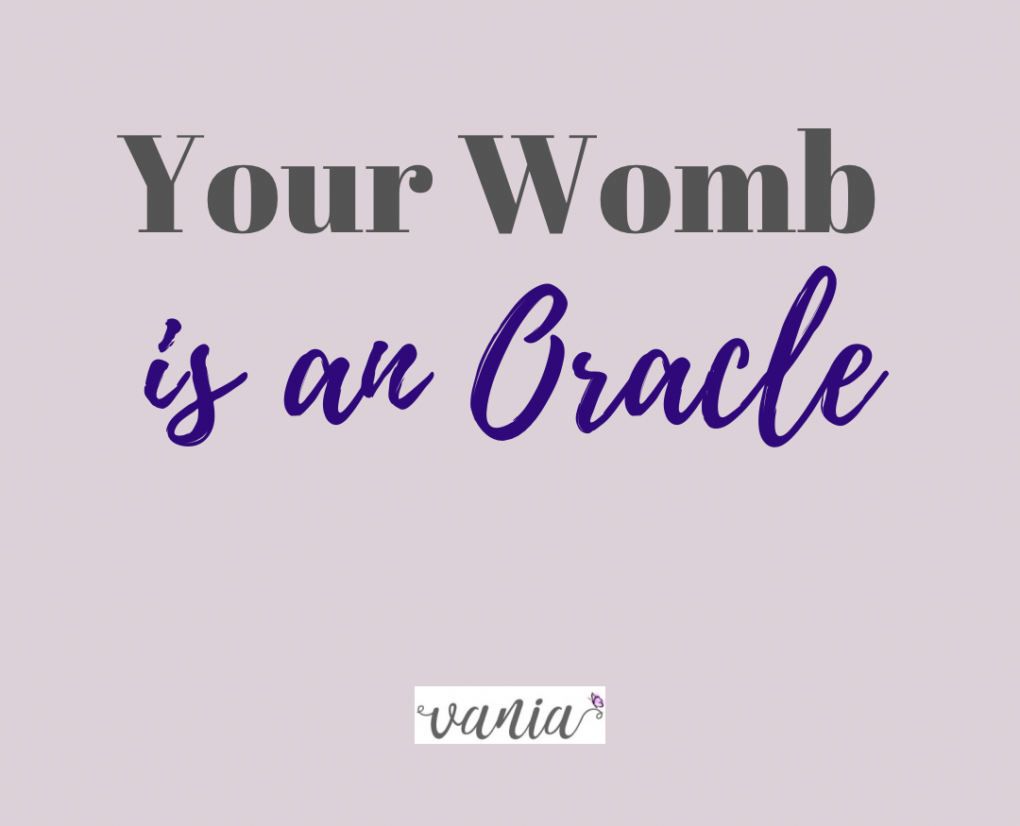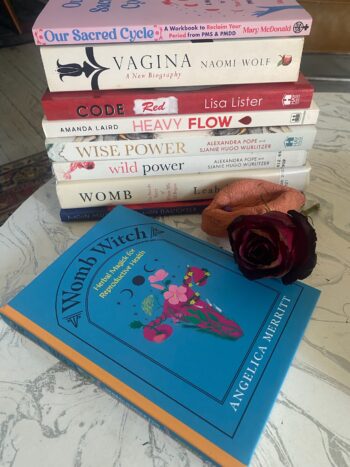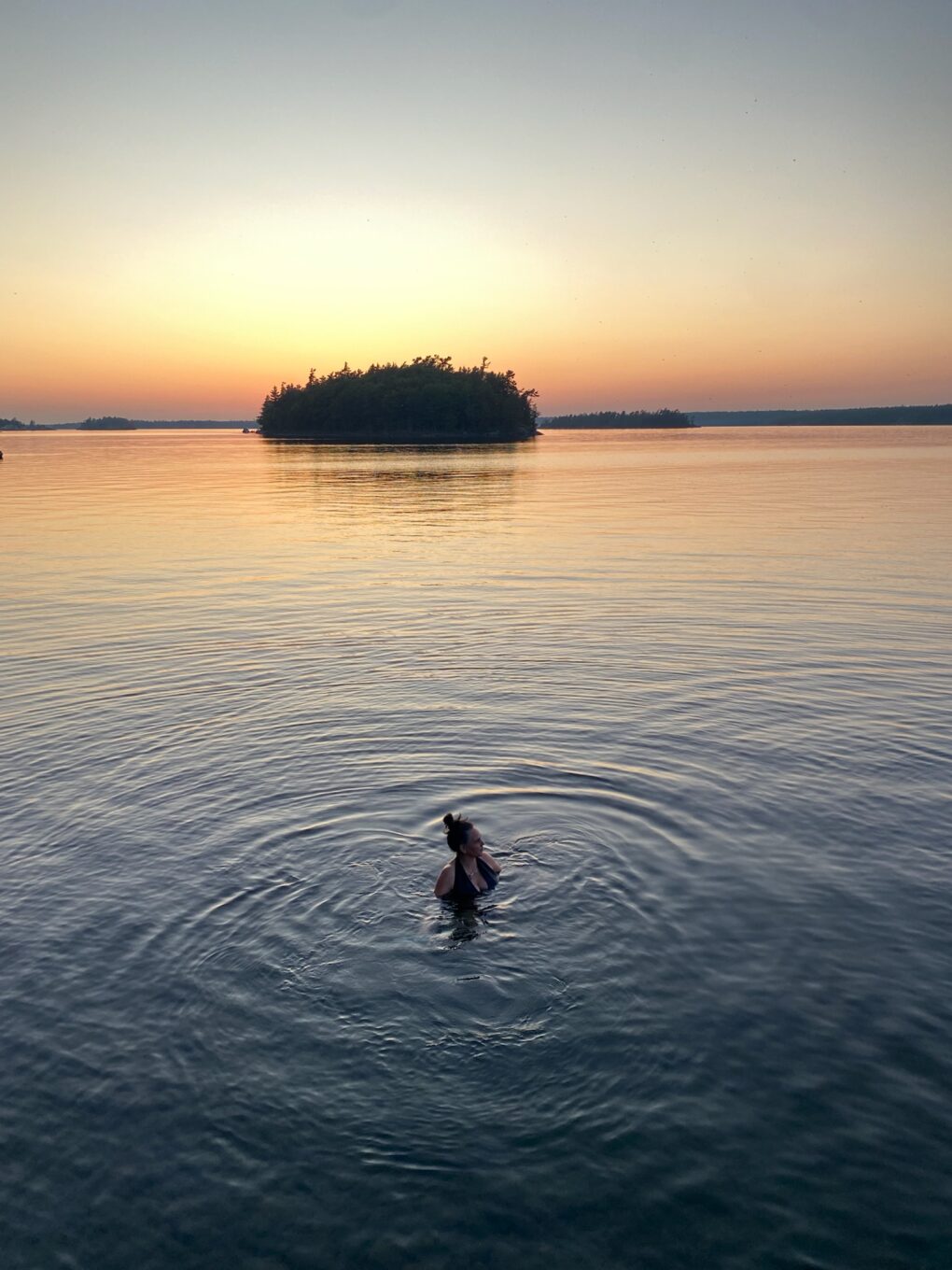Each year, i choose a word to lead me, to teach and guide me. This year, i was given the gift of PRESENCE, and like many words before, i end my date with my word with so much gratitude and awe of this practice. It was the perfect word to be in communion with: I had noticed too much time on my phone, watching other people live their life, and struggled with healing my core wound of belonging. In spending time with my feelings and thoughts in 2024, I realized that i inherited a legacy burden (or i like to call it an ancestral wound) of loneliness. So, presence with my feeling lead to a year of pushing myself to be more present in my life and world.
I always use the spiral path of attuning to myself through a mind body and soul frame of reference. So this year, i sat with my mind by practicing Mindfulness. I sat with my heart so i could find where my Self lived, and not just the Parts who run my inner show. True presence is being in Self energy, so that we’re not fighting ourselves or our parts, but rather being our true full selves. I found my presence lives at my heart centre and this lead to a deeper communion with my soul: I became present with my soul seed and glimmers of the divine. This intentional action helped me embody a loving presence towards myself, fuelled by curiosity, attention, and being enchanted with life in the present moment.
Presence is a healing reparation and as a therapist i trust that my loving, attuned presence in a session is part of my medicine. For many, we don’t have access to another human who truly listens and holds space with full rapt attention. This can bleed into an attachment rupture, so therapists can offer a repair with their undivided attention. Presence facilitates a new depth of possibility of interpretation of a story and thoughts by instead allowing ourselves to be guided by what is right here, right now. It is a fully embodied and immersive experience that only thinking about gets part of the way in and down. In Toxic Productivity by Israa Nasir, she shares that “healing takes place when you develop curiosity, consciously look inward, reflect on the way you think, feel and act, and then make other choices to change how you think, feel and act.” As a somatic therapist, listening to the soft cues and calls of the body is what allows for full healing and transformation. We listen with our eyes and ears. I think of this addition as a necessary ingredient for alchemizing healing – we need more than content and understanding, but also processing that can lead to a more sustainable change. Otherwise, the gold tarnishes and turns to rust, and the spiral remains a loop.
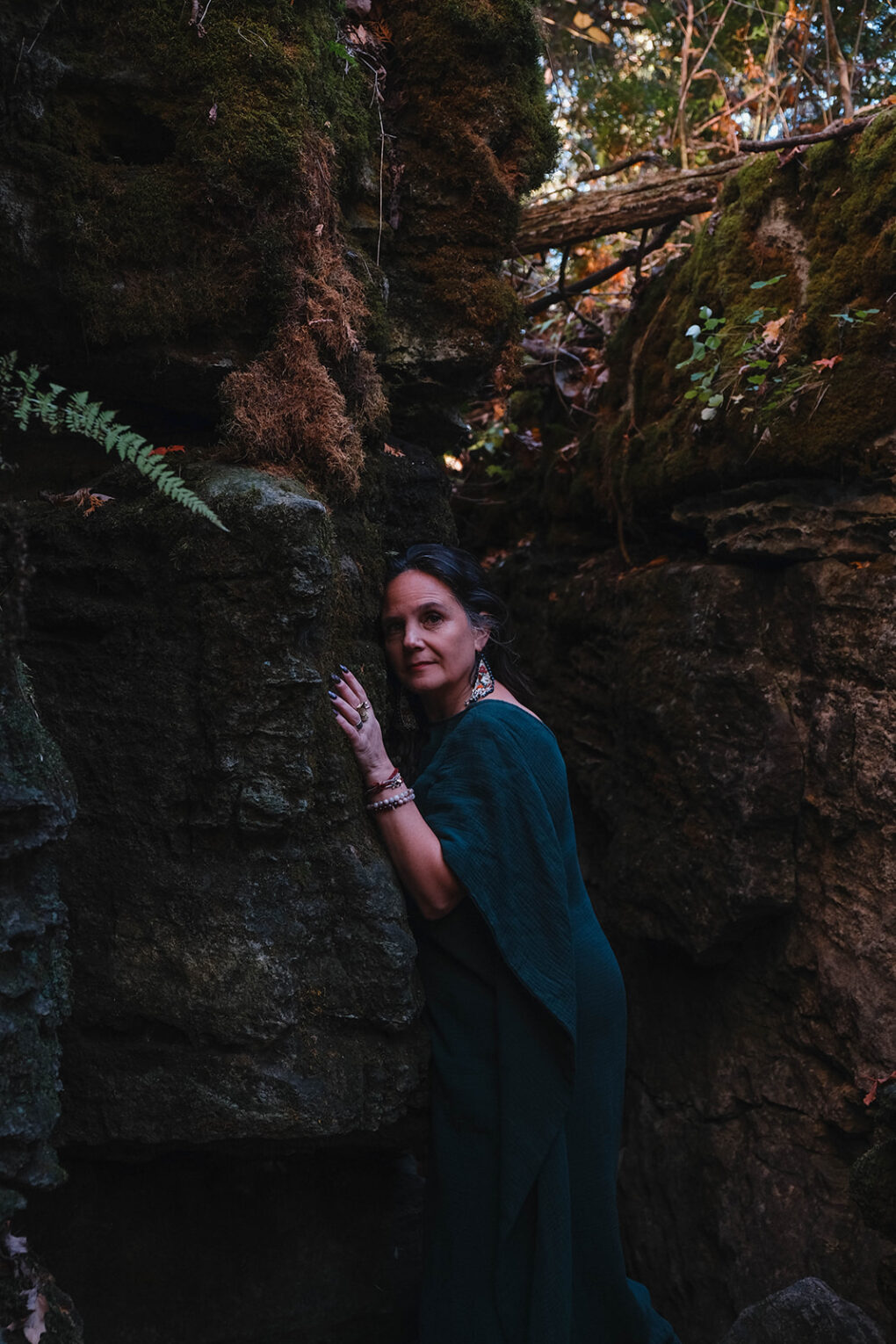 Attention to Detail
Attention to Detail
Presence offers
the seed to grow, the spark to light.
It allows for
attention to this moment
like the gift it is.
We we can invite
our mind to quiet,
our body to soften,
our Soul self says thank-you.
May this moment
right here,
now.
Hold you with
curiosity and awe
as you turn inward
and find your inner fire.
~ vania sukola
Presence is giving ourselves permission to be fully alive in this moment, right here right now. It allows space for the feeling that is also present, and also temporary. Giving myself attunement through my own presence helps me access what i need, wish for, or desire. It slows down urgency and hustle culture, as well as internalized patriarchy because it ultimately guides me to check in with my needs and attend to them. And so, presence became the catalyst to reclaiming the right to have needs, and more so to follow through with tending to them.
Like everything, presence needs practice, and not perfection, to integrate it into your life. In The Witch’s Way Home, Emma Griffin shares that being presence with the present moment is a way to deepen your intuition as well as break free of constraints enforced by patriarchy. The pause that is required helps us tune into our surroundings, and trust that there is no such thing as coincidence. We need to be present to notice the synchronicities, the repeat of numbers or birds, the song that keeps playing. This journey with presence enabled me to find a few practices to help me land more fully in my own presence.
Stop Breathe Be – pause exhale be body
This year, i had a relationship with cold plunging and strength training. They both offered a practice of presence – to not rush through the steps but to be present with my body and breath through them. It was my body who told me when to get out of the cold water, not my mind. It was my body that told me i could go one more round. A simple yet profound way to get into presence is to just spend a few moments listening to your own breath. Where does it start, where does it travel to? Start be having a commitment to your own breath for a minute. What is the quality of your breath? Does it seem to be saying something to you?
Orienting to the Space
Orienting is a popular somatic practice, and for good reason. This practice helps us land more fully in our body, especially when in a new place or we need to drop into our body after spending too much time in our head. It builds on the concept of Interoception, a way of looking inward and witnessing our own internal landscape. Look around your space – what do you see? Spend a few breaths taking in an item, an image, a sound, or a smell. Then let this item infuse into your body as a way to drop into presence. The body enters a state of calm presence when we have a felt sense of safety, trust, belonging, and connection with our surroundings.
A Date with Your Journal
Amy Cuddy shares in her aptly named book Presence this: “Presence is the state of being attuned to and able to comfortably express our true thoughts, feelings, values and potential.” She continues to share that “it’s a moment-to-moment phenomenon.” Our thoughts have a way of running ahead of us, and causing us to claim what we feel or think is 100% true. It might be, or it might be a part who gets activated by a certain emotion. Journalling as a way to process an experience can help us be self-reflective and more curiosity allows for more Self-awareness. A great journal prompt is this writing shuttle: “Today, what captured my attention was….”
Turn-off Distractions
The presence of my own heart’s desire can lead to bliss. My present mind is a way to shift my experience so we need our full attention. In Tantra-related research studies found that the #1 thing women need during sex is the partner’s presence – just being there, having all the time in the world, and to offer touch without expectations or doing much. Deep attention births connection and aliveness, and this is ultimately what leads to a more fulfilling experience and relationship. And surely, why do we need to rush a good thing, and one that is so delicious and pleasure-filled? As Glow Moments give us deep presence and glimmers are the micro gifts of delight, maybe there is a reason we need to turn towards the alchemical change that is offered via pleasure, beauty, and joy.
Have a Single Focus
One book i read this year was The Relaxed Woman by Nicola Jane Hobbs. Her book spoke about the impact of capitalism and internalized patriarchy as a way to make us override our rest. It shared how multi-tasking not only burns us out, but also can make us take LONGER to get things down. I love her concept of Safeness Signals. These are things that create the somatic experience of comfort, calm, and connection. They can be via social events that are soothing, or nonsocial individual experiences that amplify our senses and spiritual self. For instance, presence with a loved one, a favourite meal, music, or rose oil are my “Safeness Anchors” as they ground me in the present moment, as well as connect the pace of my heart to the moment right here right now.
Mindful Movement
Nothing is inherently self-regulation. Even if it is with my own breath, i am co-regulating parts of my body and self. When we mindfully attune to our body, we become even more present with what it is trying to tell is, what information it is offering. This is where wisdom and insight can inspire change. Learning about polyvagal theory, the Window of Tolerance (i love the updated term Window of Presence!), and the nervous system has revolutionized my life. It has healed my attachment style and fostered a secure sense of Self as well as confidence. Dancing, bike riding in the city, and being in ceremony with other people, plants, and nature has been the reclamation and remembrance i needed. Doing this work has also offered a deeper decolonizing reframe about healing work, as i know our ancestors carried this wisdom already.
Full Connection
Our social engagement system has an important role in promoting our overall health and well-being. Spend time with others who give you attention. Be it a pet, a friend, a lover, or your child. It is not just about being physically present. Rather, we need to have our hearts co-regulate, have the gift of mirror neurons and shared experience. Marion Woodman has been teaching me about my soul and deepening into presence with the oracular wisdom of my womb and dreams this year. In soul-making school with Sil Read this year, one phrase we said at the beginning of each class anchors us: “If we could allow the pace of our meeting to meet the pace of our heart, that is where we will find genuine understanding.” It is the word genuine that has been such a teacher for me this year. It is what helped me shift from a distracted presence or Part to one that is truly self-led. This is what allowed me to feel more belonging – to myself and also as a way to heal my core belonging wound and experience of loneliness.
Commune with Nature
Nature inspires. It wants us to revel in its beauty with awe and wonder. It is not just what we can receive from it, but rather how to be in communion with it. One of the biggest gifts this year has been the spiritual and sacred way i have been held in ceremony with and in nature. I made a commitment to myself to attend women’s festivals and weekend retreats this year, as a guest and ceremonialist both. Some were intentionally held in places out of the city, while others were circles close to my own urban dwelling. All fused the elements and nature’s offerings into them as part of the experience. Being able to sit under my Sacred Tree, offering her gifts and gratitude has been a beautiful way to shift the mundane daily life into one with more presence with spirt.
Presence is an anchor: Giving myself presence is like rooting myself in the sand after landing at the bottom of the sea. If offers a felt sense of sure-footedness in my body and mind. It births a version of us that is connected to ourselves and outside our own self, as well as grounds us with confidence and calmness in our body. When we strive towards aligning with our most Self self, we send out an energy and frequency that is deeper than our intellect. Rather, our soul self is alive in the moment and we are channeling a level of vibration that reflects our truest self, not just the parts of us that have been created to protect us. We are living in a more conscious way, awake to each moment with intention and integrity.
This year, i ultimately learned that i love my own company, and solitude is not the same as lonely. I can be in a group of people and feel so alone. It is in a community with soul kin and mirror friends when i know my presence is valued and wanted. This is where the work of finding our true Self is needed. This presence creates a radiance of Self that is both connected and grounded. It is a frequency we send when we are aligned with our essence, in the present moment, and is key to creating connected, conscious relationships with ourselves and others. With presence, we are awake in every moment, present in our body, and able to access our inner wisdom. When we take time to get to know our truest self, we are gifted with being present by it, and the people who are lucky to be in our company get to know this version too.


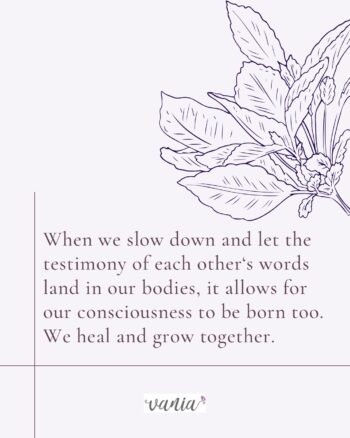
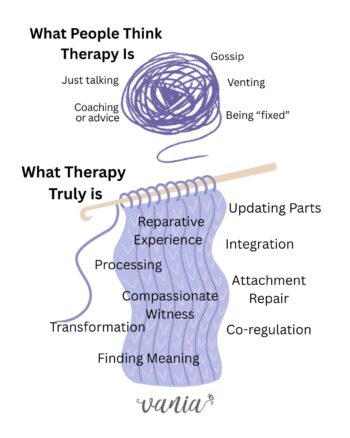
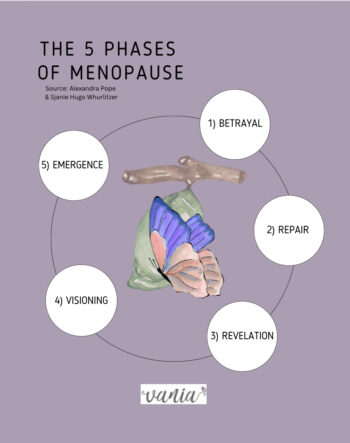 We are living longer and now have this 4th archetype. Our ageist society hates getting old, and has demonized women’s rage and anger, making menstruation a dirty word. Learning more about the possible blessing and definite spiritual transformation that is menopause has been inspiring and also a remembering for me. Learning from teachers like Jane Hardwicke Collings and the
We are living longer and now have this 4th archetype. Our ageist society hates getting old, and has demonized women’s rage and anger, making menstruation a dirty word. Learning more about the possible blessing and definite spiritual transformation that is menopause has been inspiring and also a remembering for me. Learning from teachers like Jane Hardwicke Collings and the 